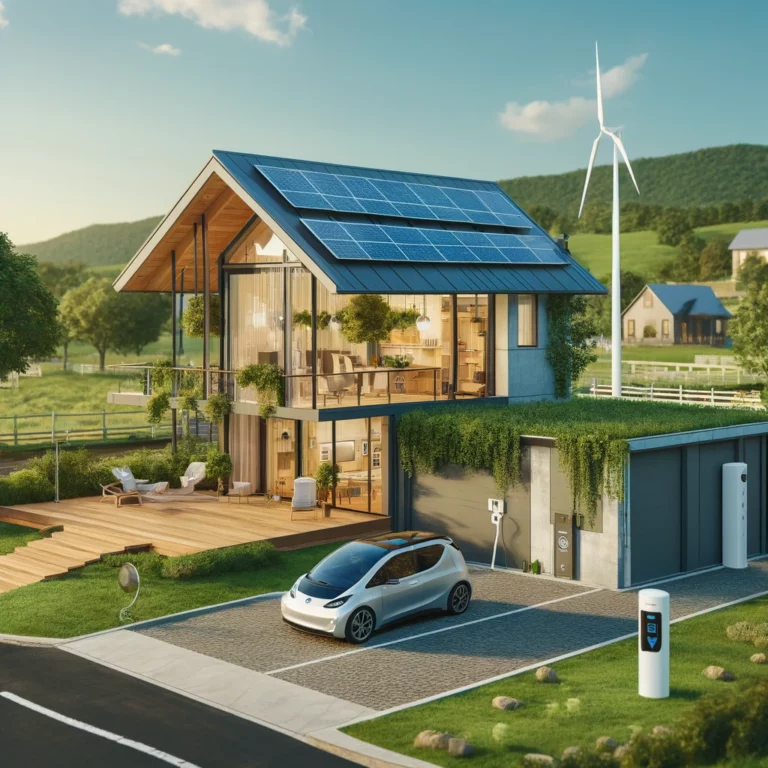Integrating Sustainable Energy Solutions in Residential Developments

Introduction
Integrating sustainable energy solutions into residential developments is increasingly becoming a priority in Ireland, aligning with national goals for energy efficiency, carbon reduction, and sustainable living. For developers and planners, the incorporation of these solutions presents an opportunity to meet and exceed Irish building standards and guidelines, while also catering to a growing market demand for green homes. This guide delves into the process of integrating sustainable energy solutions, such as solar panels, heat pumps, and energy-efficient designs, into residential developments in Ireland, covering planning considerations, benefits, and examples of successful integrations.
Planning Considerations for Sustainable Energy Solutions in Ireland
- Understanding Irish Building Regulations and Standards: Familiarise yourself with the Building Regulations (Part L – Conservation of Fuel and Energy) which set out the requirements for energy efficiency in residential developments. The Nearly Zero Energy Building (NZEB) standard is particularly relevant, requiring new dwellings in Ireland to have a very high energy performance.
- Site Analysis and Orientation: Conduct a detailed site analysis to understand the environmental characteristics of the development site. In Ireland, optimising the orientation of buildings to maximise solar gain while minimising exposure to prevailing winds can significantly enhance energy efficiency.
- Selection of Sustainable Energy Technologies: Choose technologies that are well-suited to Ireland’s climate and energy needs. Solar PV panels, despite Ireland’s variable weather, can significantly contribute to electricity needs. Air-to-water heat pumps are another effective solution, utilising Ireland’s mild climate to provide heating and hot water efficiently.
- SEAI Grants and Incentives: Explore grants and incentives offered by the Sustainable Energy Authority of Ireland (SEAI) for integrating sustainable energy solutions in residential developments. These can include grants for solar PV installations, heat pump systems, and home energy efficiency upgrades.
Benefits of Integrating Sustainable Energy Solutions
- Environmental Benefits: By reducing reliance on fossil fuels and decreasing greenhouse gas emissions, sustainable energy solutions contribute to Ireland’s national goals for sustainability and climate action.
- Economic Benefits: Energy-efficient homes have lower energy bills, offering long-term savings to homeowners. Additionally, properties with integrated sustainable energy solutions often attract a premium in the Irish market.
- Health and Well-being: Sustainable homes in Ireland can provide better indoor air quality and more comfortable living environments, contributing to the health and well-being of residents.
Examples of Successful Integrations in Ireland
- Cloughjordan Ecovillage, Co. Tipperary: This development is a leading example of sustainable living in Ireland. It features energy-efficient homes powered by renewable energy sources, including a woodchip-fired district heating system and solar panels, showcasing the practical application of sustainable energy solutions in a residential community.
- Passive House Developments: Various developments across Ireland have adopted the Passive House standard, achieving extremely high levels of energy efficiency through superior insulation, airtightness, and the use of mechanical ventilation heat recovery systems. These homes require minimal energy for heating and cooling, setting a benchmark for sustainable residential design.
- Solar PV in New Developments: Several new residential developments in Ireland have integrated solar PV panels as a standard feature, contributing to the NZEB requirements. These developments demonstrate the feasibility and benefits of solar energy in Irish homes, even with Ireland’s variable climate.
Conclusion
Integrating sustainable energy solutions into residential developments is a strategic response to Ireland’s environmental, economic, and social goals. By adhering to Irish standards and guidelines, and leveraging available grants and incentives, developers can create homes that are not only energy-efficient and sustainable but also highly desirable to modern homebuyers. The examples highlighted demonstrate the potential and success of such integrations in Ireland, paving the way for a more sustainable future in residential development.




